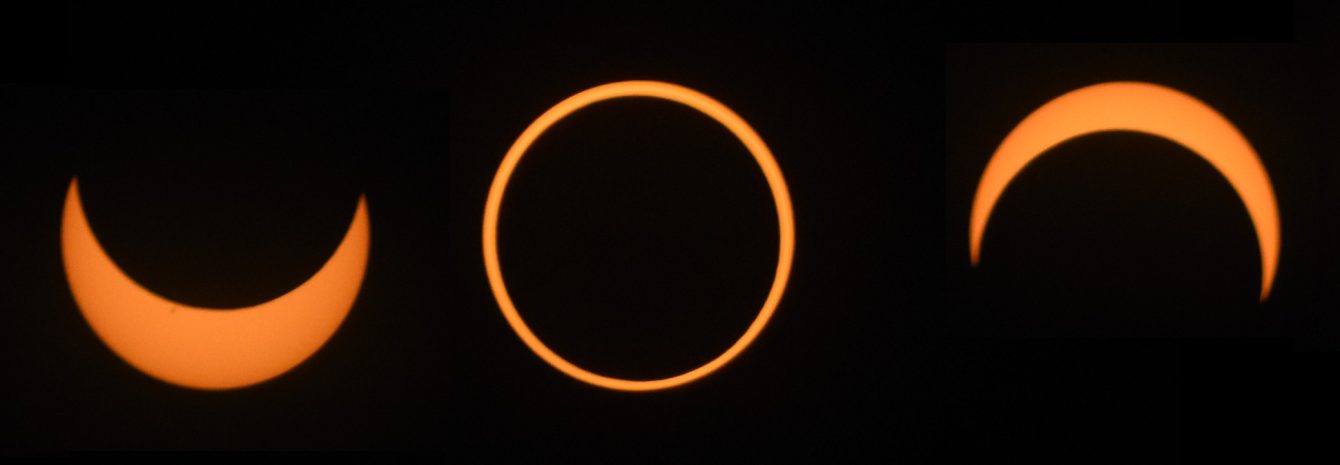September 3, 2023: The gibbous moon nears Jupiter. The pair is visible during morning twilight and during the evening. Brilliant Venus continues to emerge from bright twilight.

by Jeffrey L. Hunt
Chicago, Illinois: Sunrise, 6:18 a.m. CDT; Sunset, 7:21 p.m. CDT. Check local sources for sunrise and sunset times. Times are calculated by the US Naval Observatory’s MICA computer program.
The five-planet morning parade continues with Venus, Jupiter, and Saturn easily visible. Uranus is easy to locate through a binocular between Jupiter and the Pleiades star cluster. The challenging view, even through a binocular, is locating Neptune in a dim Pisces starfield, over 20° to the upper left of Saturn. For sky watchers interested in seeing the two more distant planets, see the directions in the August 27th article.
Summaries of Current Sky Events
Here is today’s planet forecast:
Morning Sky

One hour before sunrise, the bright gibbous moon, 85% illuminated, is over halfway up in the sky from the horizon to overhead and about 20° to the lower right of bright Jupiter.
The Jovian Giant is slowing its eastward speed to reverse direction. It is in front of Aries, 13.6° to the lower right of Hamal, the pattern’s brightest star, and nearly 16° to the lower right of the Pleiades that are part of Taurus. Use a binocular to see the star cluster in this moonlight.

Jupiter’s Great Red Spot is visible twice during the nighttime hours of this calendar day from the Americas’ Central Time Zone. It is at the center of the planet in the southern hemisphere through a telescope at 4:06 a.m. CDT and 11:58 p.m. At the evening appearance, Jupiter is over 20° up in the east. This is not the best viewing spot, but a second opportunity to see the long-lived atmospheric disturbance.
Farther westward, Saturn is low in the west-southwest. Without a clear horizon and a binocular, the planet is lost in the lower levels of the atmosphere. The Ringed wonder is in the southeastern sky during the early evening hours.

Brilliant Venus is over 10° up in the eastern sky at this hour. It continues to emerge from bright sunlight into the predawn sky. The Morning Star joins Sirius – night’s brightest star – and Procyon.
Sirius is too far away from the planets’ orbital tracks and there is no close conjunction with Venus. Beginning in about a week and continuing through the month, Venus and Sirius are about the same altitude – height above the horizon – during morning twilight. The brightest planet and the brightest star are over 40° apart, but they stand nicely in morning’s twilight.
This morning Sirius, likely twinkling wildly, is in the southeast, slightly higher than Venus.
Evening Sky

Mercury and Mars are immersed in the sun’s light. Mercury is nearing inferior conjunction, between Earth and Sun. It moves into the morning sky later in the month for its best morning appearance of the year for northern hemisphere sky watchers.

Mars, much dimmer than might be expected, sets less than an hour after sundown.

Saturn is low in the east-southeast at sunset and higher in the sky as twilight progresses. By two hours after nightfall, the Ringed Wonder is over 20° above the southeast horizon. Saturn, Skat, the Aquarian’s leg, and Lambda Aquarii (λ Aqr on the chart) are at the vertices of an equilateral triangle. The two stars are not exceptionally bright, so use a binocular to find them.

It is time to remind readers to locate a telescope night with an astronomy club or science museum during the next few weeks to spot the Ringed Wonder through a telescope. Better yet, convince the neighborhood sky watcher to aim their telescope at the planet to give you a look.

The moon, 77% illuminated, rises in the eastern sky about two hours after sundown, followed by Jupiter thirty minutes later. As the midnight hour approaches, the lunar orb is about 20° up in the east and 7.5° to the upper right of Jupiter.
During the night these outer planets and the moon appear farther westward. During morning twilight, Saturn disappears into the haze at the west-southwest horizon. Jupiter and the moon are high in the south and the Morning Star appears in the eastern sky.
RECENT PODCASTS
LATEST ARTICLES
- 2024, May 21: Moon Nears Scorpion’s Claws
 May 21, 2023: The moon nears the Scorpion’s claws. Mars and Saturn are in the eastern sky before sunrise. Mercury, Venus, and Jupiter are lost in sunlight.
May 21, 2023: The moon nears the Scorpion’s claws. Mars and Saturn are in the eastern sky before sunrise. Mercury, Venus, and Jupiter are lost in sunlight. - 2024, May 20: Betelgeuse, Heliacal Setting
 May 20, 2023: Orion’s Betelgeuse makes its final appearance in the western sky after sunset for the year, known as heliacal setting. The moon is near Spica.
May 20, 2023: Orion’s Betelgeuse makes its final appearance in the western sky after sunset for the year, known as heliacal setting. The moon is near Spica. - 2024, May 19: Moon-Spica Conjunction
 May 19, 2023: Before sunrise, Fomalhaut is at heliacal rising. After sundown, look for a Moon-Spica conjunction.
May 19, 2023: Before sunrise, Fomalhaut is at heliacal rising. After sundown, look for a Moon-Spica conjunction. - 2024, May 18: Jupiter at Solar Conjunction
 May 18, 2023: Jupiter passes behind the sun today, reappearing in the morning sky in about a month. The gibbous moon is visible after sundown.
May 18, 2023: Jupiter passes behind the sun today, reappearing in the morning sky in about a month. The gibbous moon is visible after sundown. - 2024, May 17: May Gibbous Moon with Virgo
 May 17, 2023: After sundown, the gibbous moon appears in front of Virgo. Mars expands a gap to Saturn before sunrise.
May 17, 2023: After sundown, the gibbous moon appears in front of Virgo. Mars expands a gap to Saturn before sunrise.
